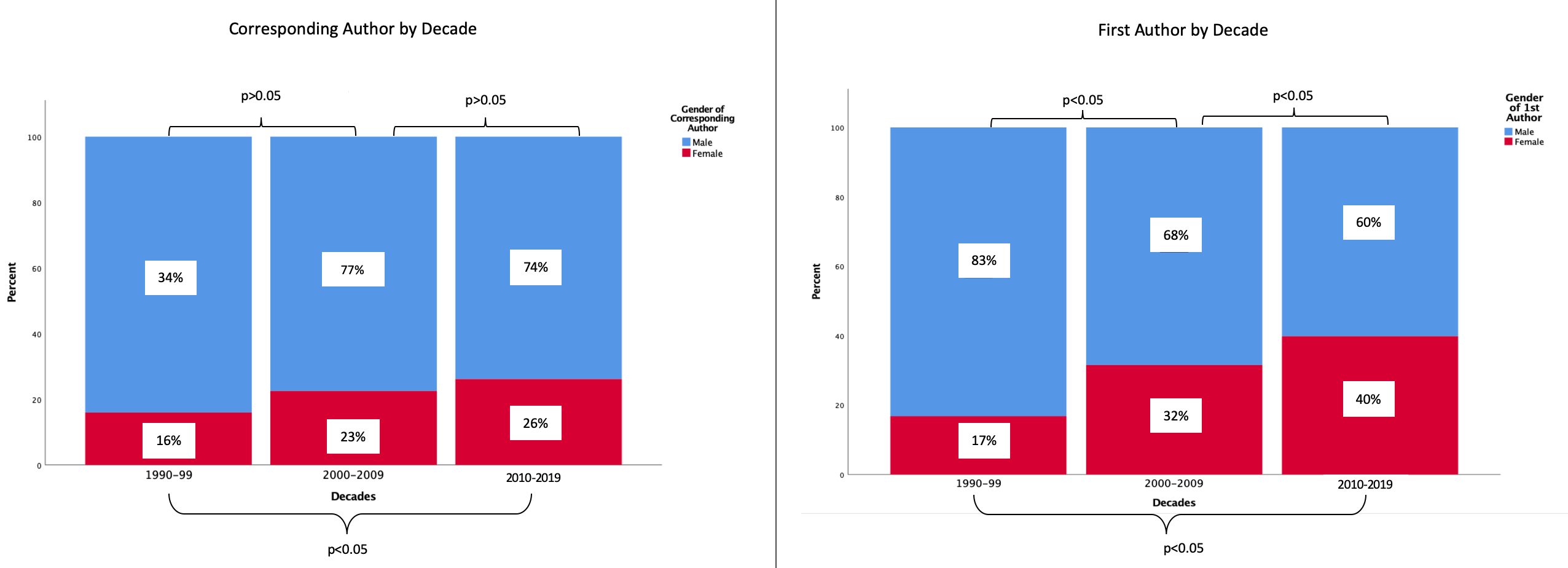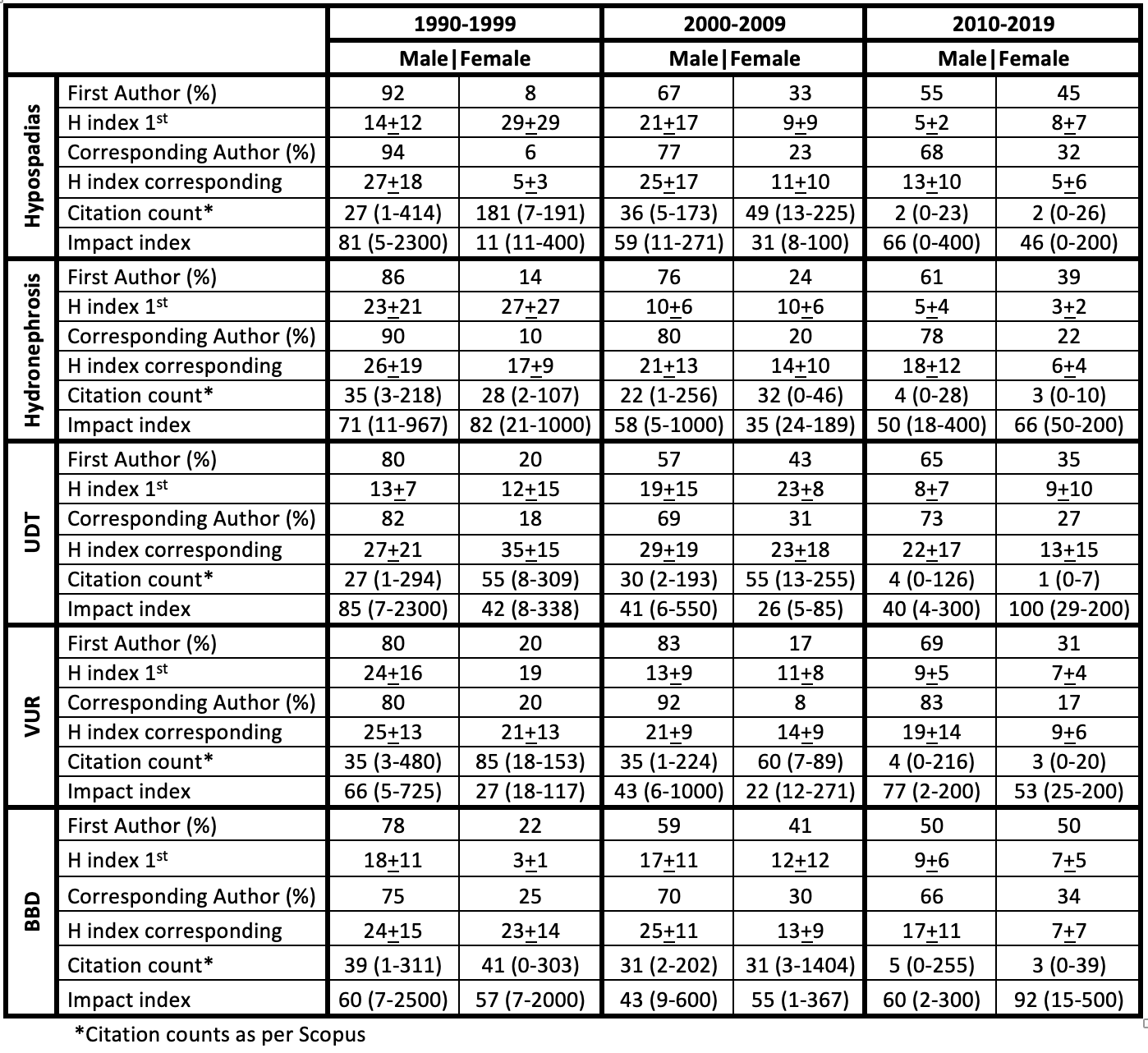Female Authorship Publishing Trends and Forecasting in Pediatric Urology: Are we Closer to Gender Equality?
Mandy Rickard, MN, NP1, Jessica Hannick, MD1, Joana Dos Santos, MD1, Anne-Sopie Blais, MD1, Jishen Wang, BSc Student2, John-Paul Oliviera, PhD3, Darius Bagli, MD1, Armando J. Lorenzo, MD1.
1SickKids, Toronto, ON, Canada, 2University of Toronto, Department of Statistical Sciences, Toronto, ON, Canada, 3Stanford University, Stanford, CA, USA.
Introduction
Gender discrepancies in medical literature authorship have been described in several specialties, with studies showing a male-predominant pattern. However, recent decades have seen an increase in the proportion of women entering biomedical fields. We hypothesized that this would reflect an increasing trend in female authorship in the pediatric urology literature and conducted forecasting analyses for the next 3 decades.
Methods
A literature search using PubMed was performed for five common pediatric urology conditions: hypospadias, hydronephrosis (HN), vesicoureteral reflux (VUR), bladder and bowel dysfunction (BBD), and cryptorchidism (UDT). Search terms were limited to "children" and "English language" and divided into three decades: 1990-1999, 2000-2009, 2010-2019. Search results were then organized by "best match," and the most relevant 50 papers from each time period were extracted by topic. We excluded commentaries and letters to the editor. Data was collected on author gender, specialty areas and advanced degrees, along with journal and publication-related variables. Forecasting analyses for the next 3 decades were carried out by the Holt-Winters method, a process that accounts for the presence of trends and seasonality in the data by using exponential smoothing.
Results
A total of 750 papers were analyzed. Overall, 78% of corresponding and 70% of first authors were male, and over 90% of both were physicians. A significant upward trend was observed for female-authored publications in both first and corresponding positions over 3 decades (p<0.01)(Figure 1), however all topics were predominantly male authored(Figure 2). Forecasting analyses revealed a continuing upward trend for female corresponding (55%) and first authors(83%) by 2049(Figure 3). Most studies originated from pediatric urology(59%), followed by pediatric surgery (9%) and endocrinology/genetics(5%). Papers were published in 161 journals but focused in Journal of Urology(30%), Journal of Pediatric Urology (8%), and Urology(6%). The majority of publications originated from USA (38%), Canada (6%) and Turkey (4%); were retrospective (44%) and discussed medical (54%) versus surgical management (20%). Author and manuscript characteristics can be found in Table 1.
Conclusion
Historically, the vast majority of pediatric urology literature has been generated by male authors regardless of topic, specialty, or year of publication. A persistent, rising trend in female authorship across all examined pediatric urology topics was noted, likely reflecting the increasing number of women entering the medical profession. This is projected to continue to increase in the future. Our findings are encouraging, as they suggest a movement towards equal and fair gender representation in authorship in pediatric urology. 



Back to 2019 Abstracts




